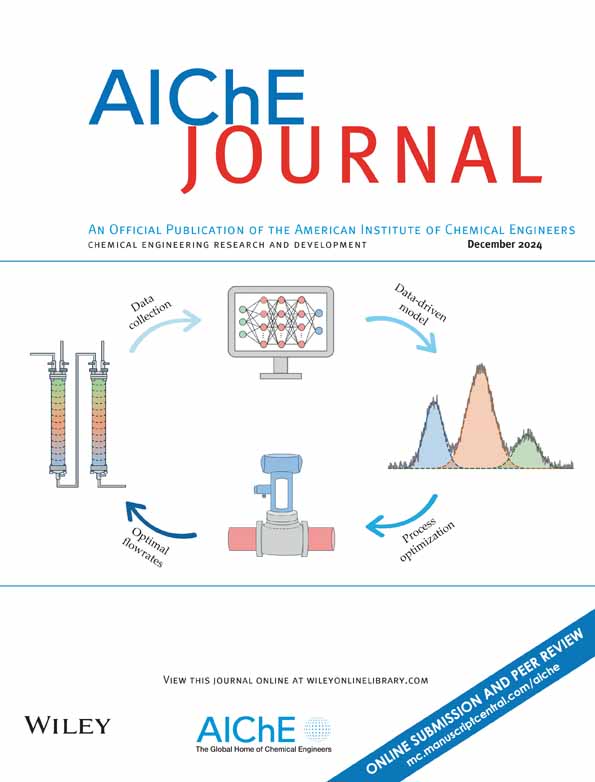Hydrogen-bonded organic framework membranes through dispersion-controlled deposition method for efficient CO2 separation
IF 3.5
3区 工程技术
Q2 ENGINEERING, CHEMICAL
引用次数: 0
Abstract
Hydrogen-bonded organic frameworks (HOFs) feature a highly ordered pore structure, abundant organic functional groups, and unique solution-processability, holding great promise in gas separations. In this study, we explored the fabrication of HOF membranes utilizing a dispersion-controlled deposition (DCD) method. To achieve homogeneous dispersion, the bulk HOF aggregates were initially dispersed in solvent and then switched to anti-solvent to generate the precipitated nanoparticles. Under vacuum-assisted assembly, the HOF colloidal solution containing nanoparticles was uniformly deposited, and the intracrystalline defects were spontaneously healed during the mixed-solvent evaporation. For the first time, HOF polycrystalline membranes were fabricated on flexible polymer substrates and demonstrated an ultrathin HOF selective layer of ~100 nm. The prepared HOF membranes exhibited high separation performance, with the CO2 permeance exceeding 600 GPU and the CO2/N2 selectivity exceeding 30. This work establishes a platform technology for HOF membrane fabrication and expands the families of carbon capture membranes.求助全文
约1分钟内获得全文
求助全文
来源期刊

AIChE Journal
工程技术-工程:化工
CiteScore
7.10
自引率
10.80%
发文量
411
审稿时长
3.6 months
期刊介绍:
The AIChE Journal is the premier research monthly in chemical engineering and related fields. This peer-reviewed and broad-based journal reports on the most important and latest technological advances in core areas of chemical engineering as well as in other relevant engineering disciplines. To keep abreast with the progressive outlook of the profession, the Journal has been expanding the scope of its editorial contents to include such fast developing areas as biotechnology, electrochemical engineering, and environmental engineering.
The AIChE Journal is indeed the global communications vehicle for the world-renowned researchers to exchange top-notch research findings with one another. Subscribing to the AIChE Journal is like having immediate access to nine topical journals in the field.
Articles are categorized according to the following topical areas:
Biomolecular Engineering, Bioengineering, Biochemicals, Biofuels, and Food
Inorganic Materials: Synthesis and Processing
Particle Technology and Fluidization
Process Systems Engineering
Reaction Engineering, Kinetics and Catalysis
Separations: Materials, Devices and Processes
Soft Materials: Synthesis, Processing and Products
Thermodynamics and Molecular-Scale Phenomena
Transport Phenomena and Fluid Mechanics.
 求助内容:
求助内容: 应助结果提醒方式:
应助结果提醒方式:


